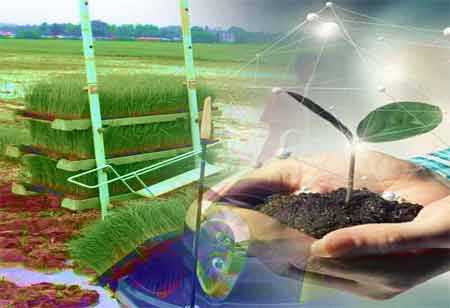Thank you for Subscribing to Agri Business Review Weekly Brief
Exploring the Potential of Automation in Agriculture
Agricultural automation, is revolutionizing farming practices worldwide, offering substantial advancements in production

By
Agri Business Review | Thursday, April 04, 2024
Stay ahead of the industry with exclusive feature stories on the top companies, expert insights and the latest news delivered straight to your inbox. Subscribe today.
Automation in agriculture holds great promise for transforming the farming sector and addressing critical challenges. Effectively managing associated difficulties is essential to unlocking its full potential. When harnessed correctly, automation in US agriculture can drive productivity and sustainability, meeting the needs of a growing global population while ensuring the prosperity of farmers and the health of the environment.
Fremont, CA: Agricultural automation, is revolutionizing farming practices worldwide, offering substantial advancements in production, sustainability, and efficiency through cutting-edge technologies. By integrating precision agriculture instruments and automated machines, this field is ushering in a new era of highly automated farming, driven by robotics, artificial intelligence (AI), and data analytics.
The Advantages of AgTech's Automation Focus:
AgTech's automation aspect provides numerous benefits, notably enhancing agricultural yields, reducing labor costs, and improving overall farming efficiency. Through the deployment of technologies such as sensors, drones, and autonomous vehicles, automated farming optimizes various processes, leading to increased profitability and addressing global food security challenges.
Checkout This : Top Agtech Solutions Companies in Canada
Imaging Technology and Precision Agriculture's Automation:
Imaging technology plays a pivotal role in the automation of precision agriculture, offering comprehensive insights into crop health, soil conditions, and environmental factors. This data empowers farmers to make data-driven decisions, optimizing their practices for maximum efficiency and yield.
The Emergence of Agriculture 4.0 in the US:
In the United States, the rise of "Agriculture 4.0" signifies the integration of digital technologies into farming practices. Software as a service (SaaS) for precision farming plays a central role in this transformation. US farmers can leverage precision agriculture to cultivate and maintain crops more profitably, utilizing data-driven approaches enabled by sustainable technologies such as AI-driven automation, machine learning algorithms, drones, remote sensing, and GIS technology.
Challenges and Concerns in Automation Adoption:
Despite its potential, automation in agriculture faces several challenges and concerns in the US context. High initial costs, data security and privacy concerns, and the lack of standardized procedures for integrating and interpreting data present significant barriers. Additionally, environmental impacts, uneven adoption of smart technology, and potential job displacement are growing concerns. Addressing these challenges requires strategic planning to ensure equitable and sustainable adoption of automation in agriculture.
The Promise of Automation in US Agriculture:
Automation in agriculture holds great promise for transforming the farming sector and addressing critical challenges. Effectively managing associated difficulties is essential to unlocking its full potential. When harnessed correctly, automation in US agriculture can drive productivity and sustainability, meeting the needs of a growing global population while ensuring the prosperity of farmers and the health of the environment.





